-
ABOUT US
-
ACADEMICS
Curriculum Program
Departments
- English
- High School Chinese
- Primary and Junior School Chinese.
- High School Mathematics
- Middle School Mathematics
- Primary School Mathematics
- Music and Fine Arts
- Physical Education
- Physics
- Chemistry
- History and Geography
- Physical Science and Optional courses Department
- Middle School Biology
- High School Biology
- Social Sciences
- Computer Science
- Courses in Primary School
Achievements and Matriculations
College Counseling
Science & Technology Innovation Contest
Subject Competition
-
ARTS
-
ATHLETICS
-
AT SHSID
SHSID ∣ TIMES
PTSA
Club Exhibition
- 龙吟社
- Live 2 Drama
- Choir
- Hip-pop Dance Club
- The Primary School Dance Troupe
- Symposiums Club
- Biology Workshop
- You Shan
- VEX Robotic
- Peking Opera Club
- Baseball Club
- Model United Nations
- The World Scholar’s Cup
- Future Problem Solving Club
- United States Academic Pentathlon
- OM Club
- AMC Club
- Music for Patients
- SHSID Gazette
- Smile Charity
- Cultural Moments
- SciAcademy
- Stem Doge Alliance
- Chinese Debate Club
- IAA
- Mock Trial Club
- Zhengming Club
- Art-to-zine
- Bananaheads
- Electronics
- Furry Friends
- GT-Racing
- MCG Philharmonics
- Village Radio
- IMMC Club
- Creative Design and Intelligent Fabrication
- Future City Research Project
- ECOCAP
- AdvocaSEA
- SPDC
- Medishine
- Floorball Club
- Animusic MTC
- Wings Up
Health and Wellness
Campus Safety
Cafeteria Service
-
ADMINISTRATION
-
ADMISSIONS
-
ALUMNI
Alumni Information
Honors Students
- Class of 2025
- Class of 2024
- Class of 2023
- Class of 2022
- Class of 2021
- Class of 2020
- Class of 2019
- Class of 2018
- Class of 2017
- Class of 2016
- Class of 2015
- Class of 2014
- Class of 2013
- Class of 2012
- Class of 2011
- Class of 2010
- Class of 2009
- Class of 2008
- Class of 2007
- Class of 2006
Who Studied at SHSID
SHS Foundation
-
DOCUMENTS
CS Fun Activity: Handmade Radio Receivers
During the lunch break of Oct. 28, Mr. He organized an innovative and engaging activity at Zhongxin Building. The students were invited to craft their own radio receiver, as well as gain an in-depth understanding of AM/FM modulation techniques and how radios work by watching some short videos.
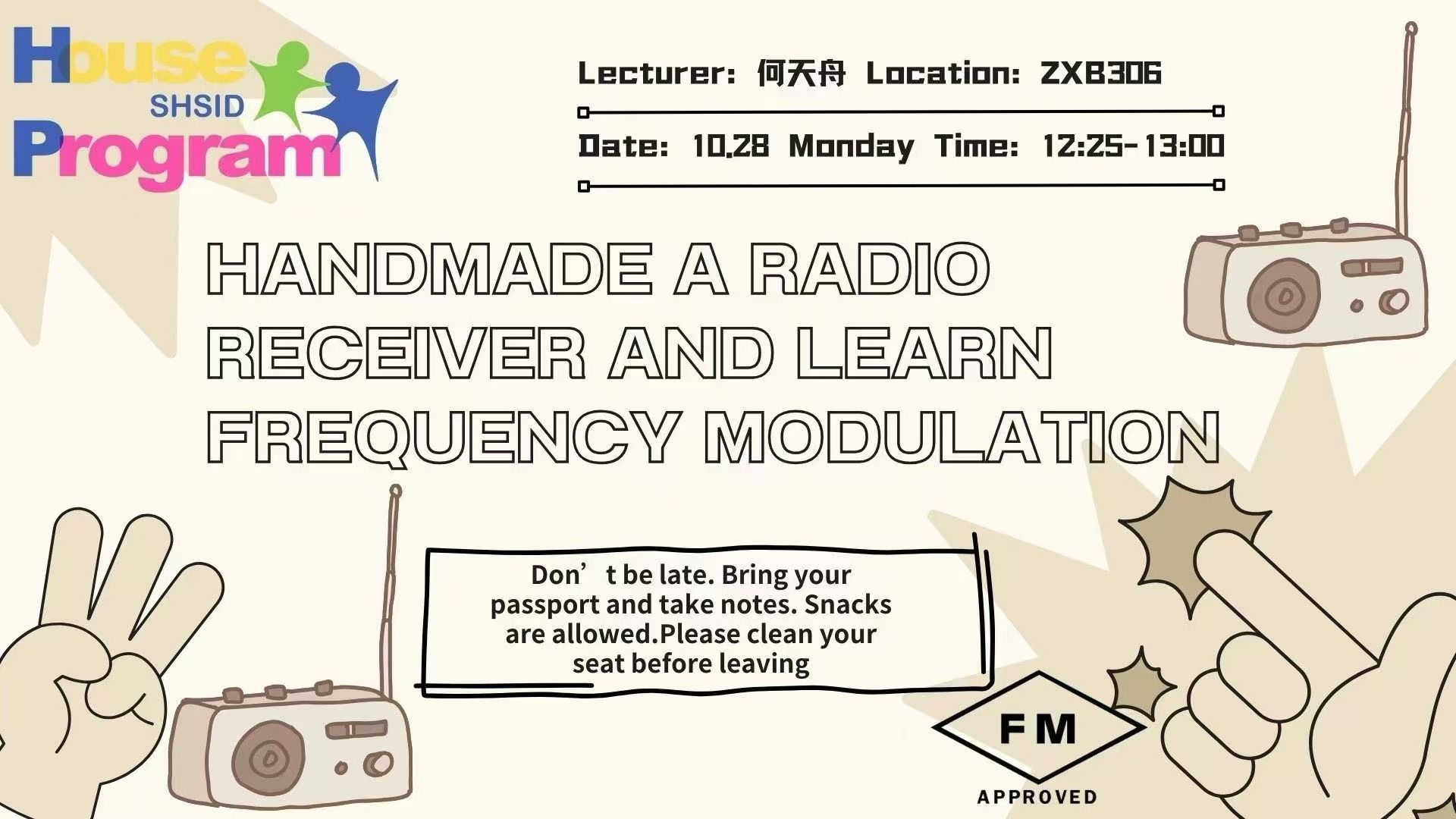

In the video instruction, students learned that radio waves, the longest waves on the electromagnetic spectrum, play a crucial role in transmitting information from radio stations to receivers. However, radio waves do not carry information themselves; instead, they generate modulated signals by overlaying message signals onto carrier signals. Radios receive high-frequency signals from antennas through preset frequency bands, then demodulate (detect) them back into audio signals, which are amplified by headphones or speakers to form sound waves that audible by the human ear.
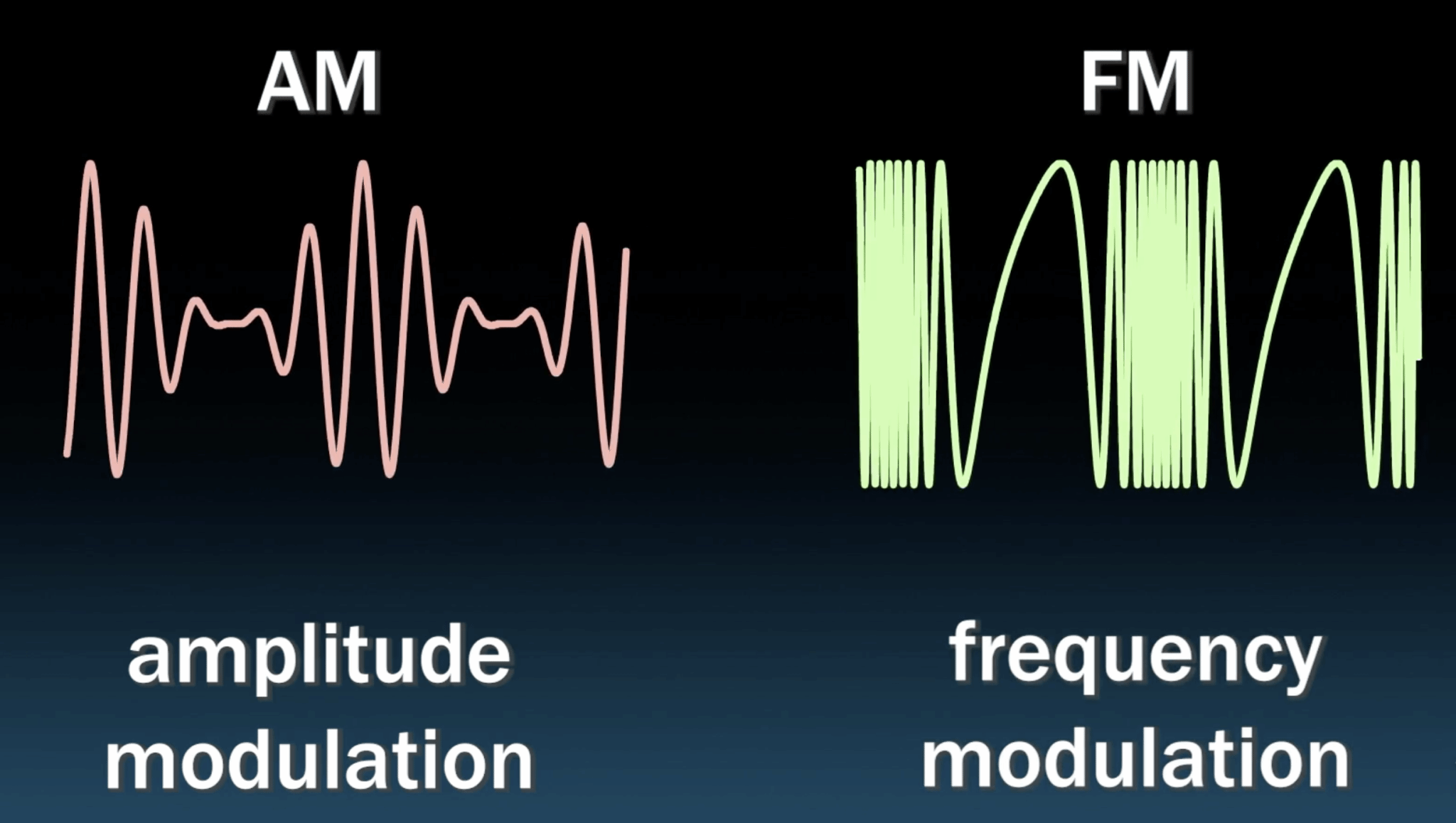
In the process of making the radios, the students read the instructions carefully, held screwdrivers in their hands, step-by-step installed various components, and then conducted final adjustments. When melodious radio sounds emerged out of the speakers, everyone's face was filled with a sense of accomplishment and joy. In the process of assembly, they felt the charm of science, and experienced the fun of hands-on work, gaining a lot!
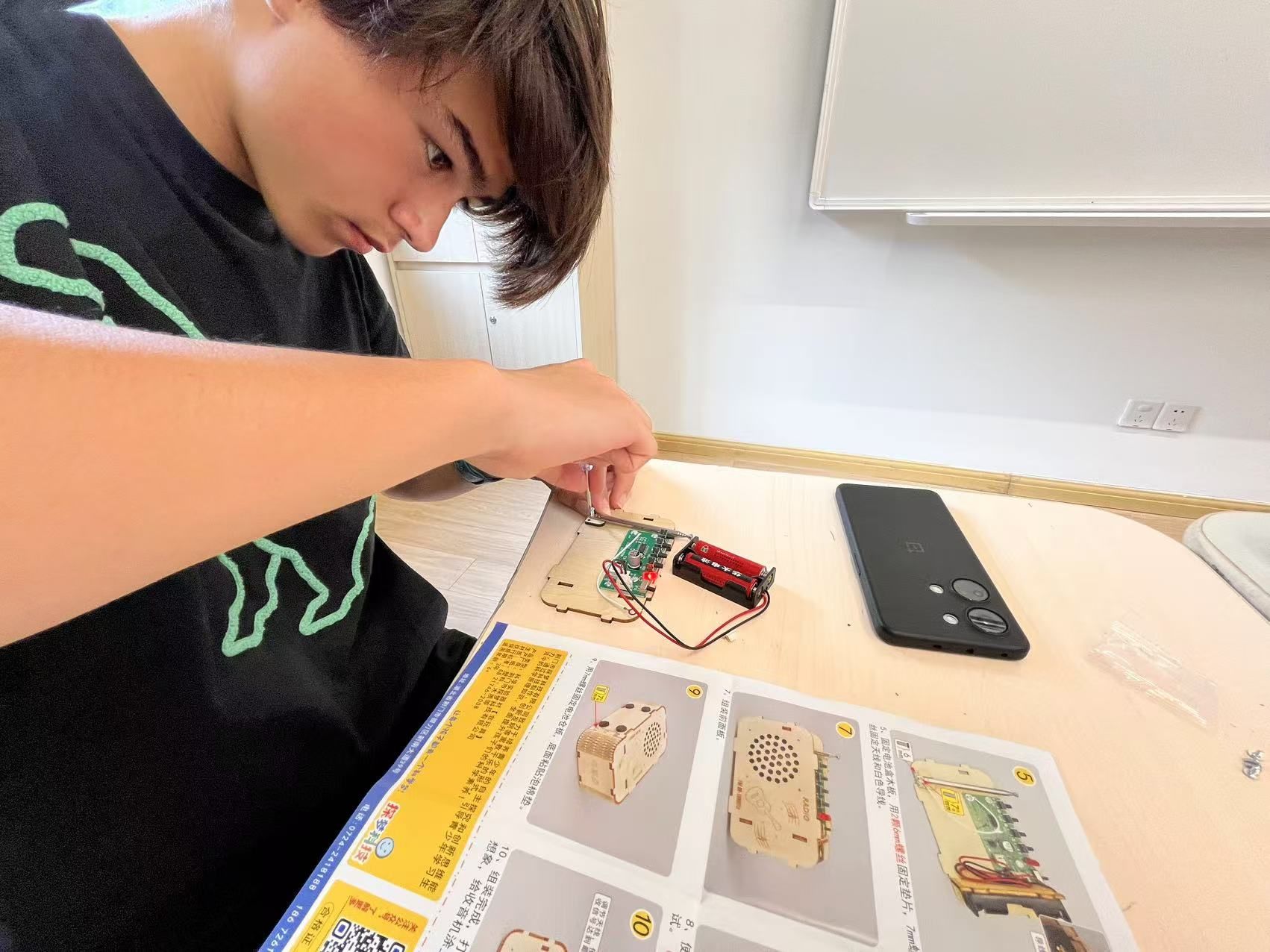
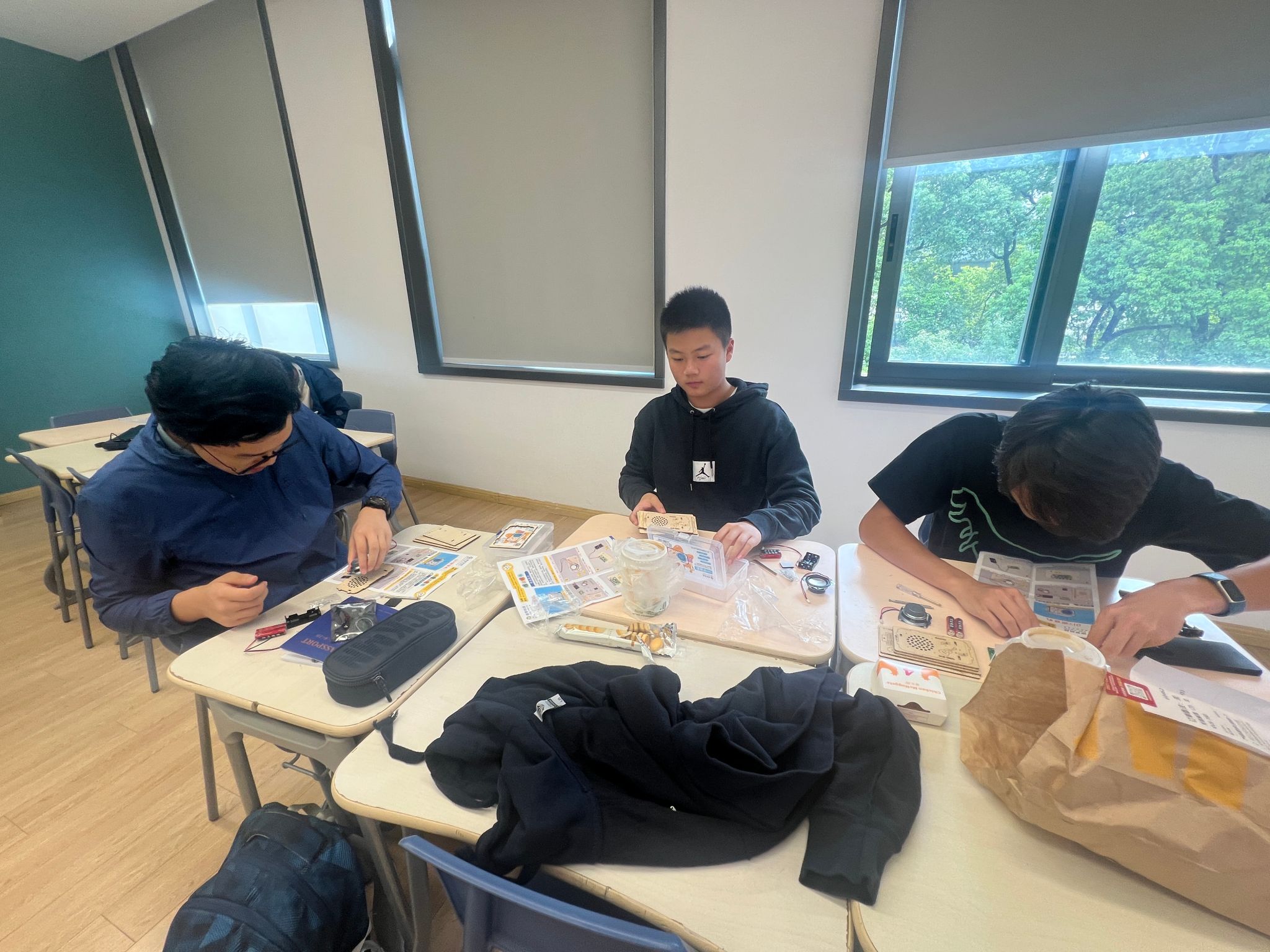
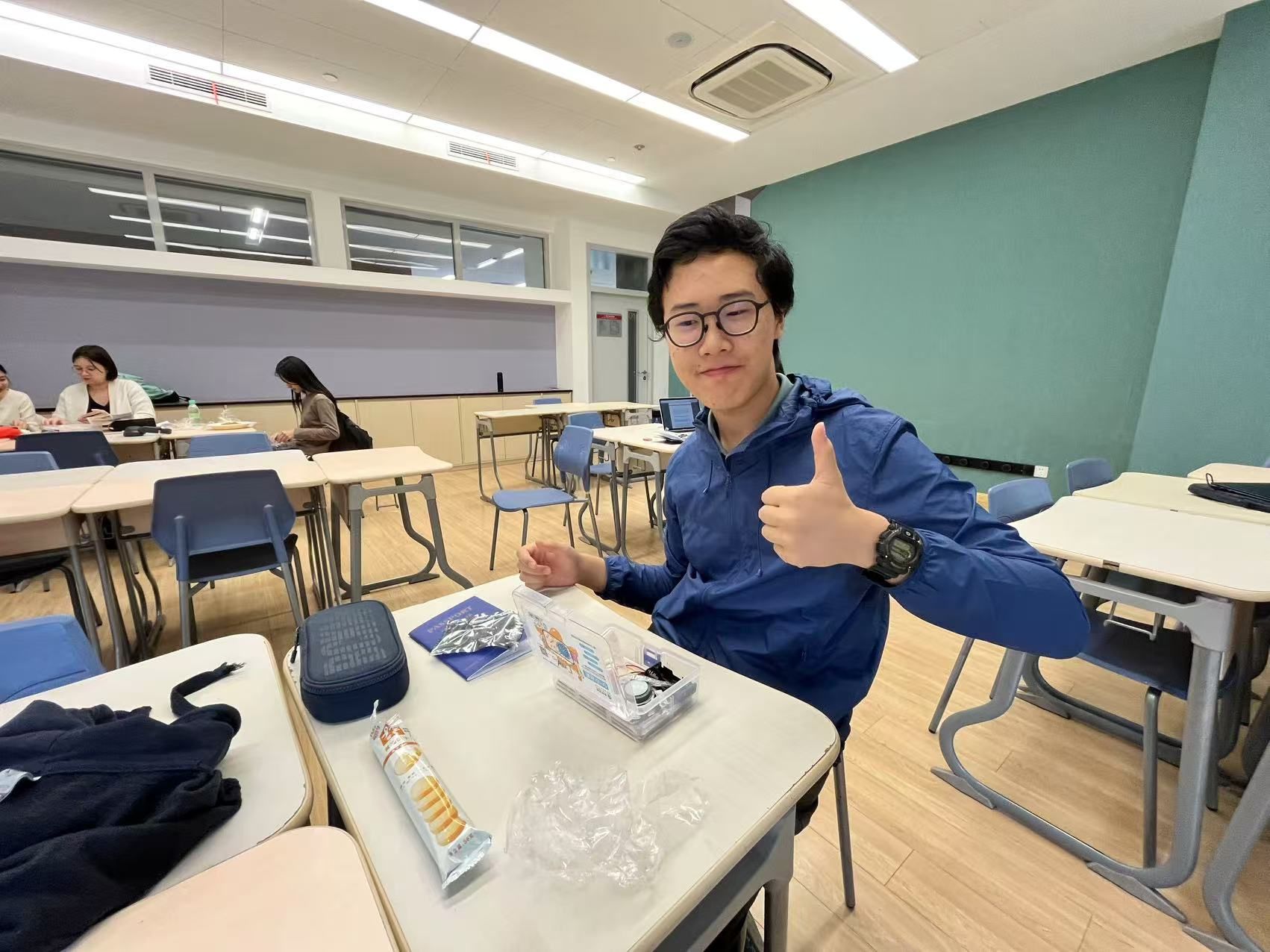
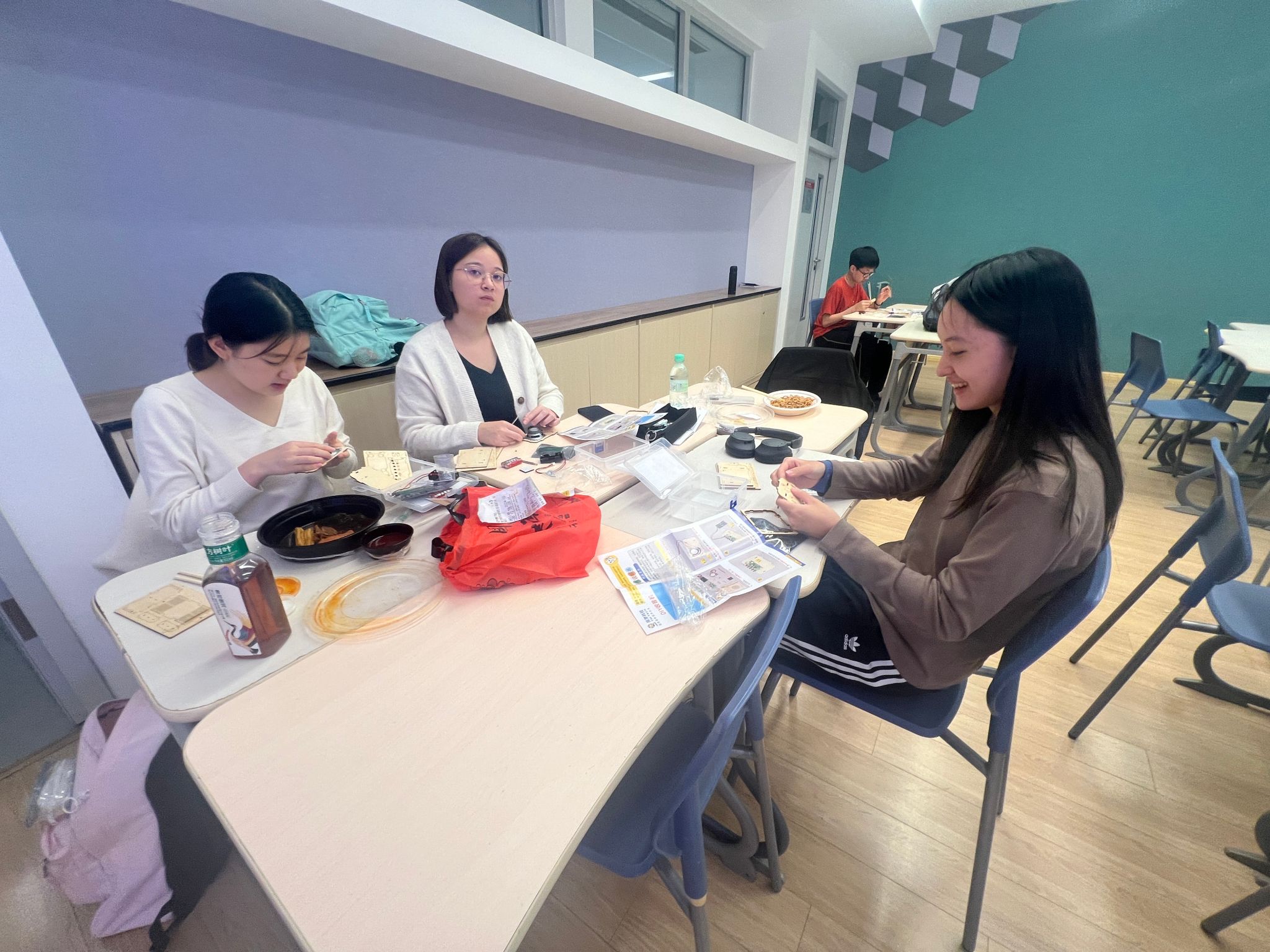
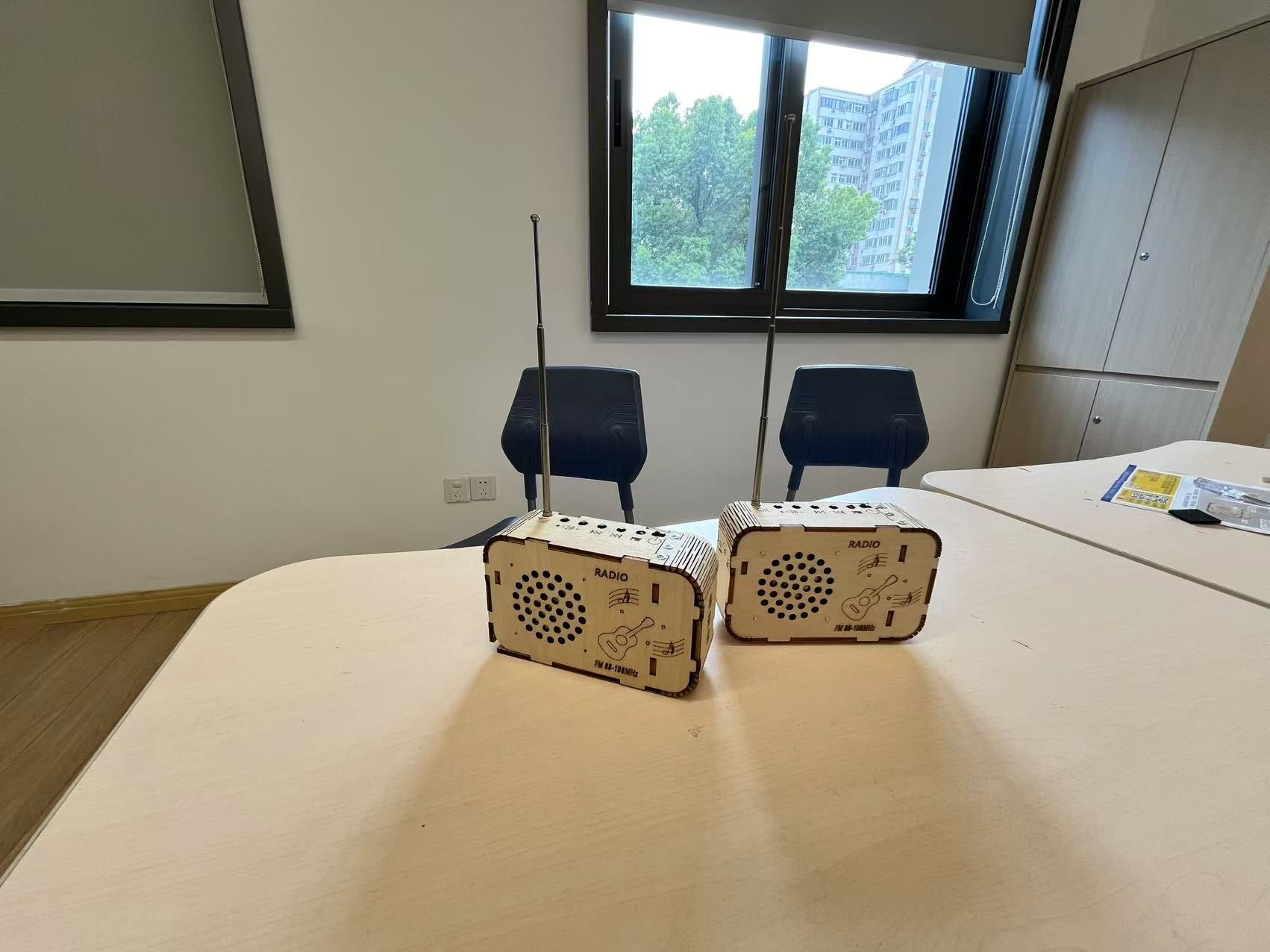
The scene at present was full of vitality and enthusiasm, and the students' focused expression and earnest attitude towards learning became a beautiful scenery. This computer science fun activity aimed to encourage students to actively think and dare to be innovative in the classroom, cultivating their scientific literacy and creativity.
(Written/Pictures by Tianzhou He Edited by Cody Turner Reviewed by Qian Zuo)